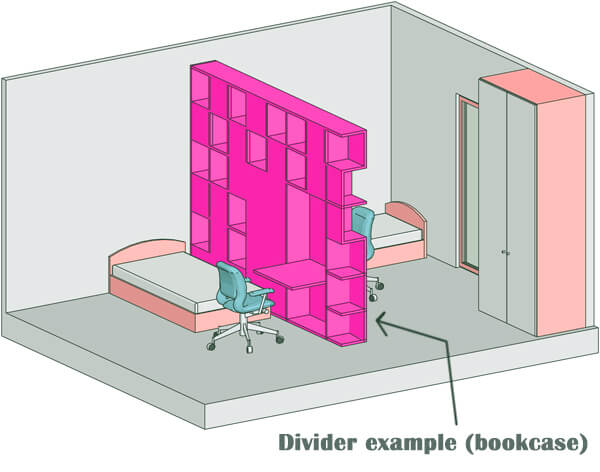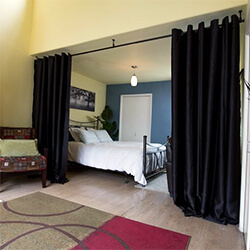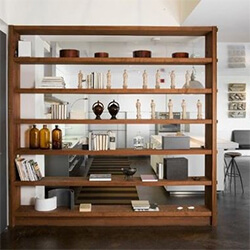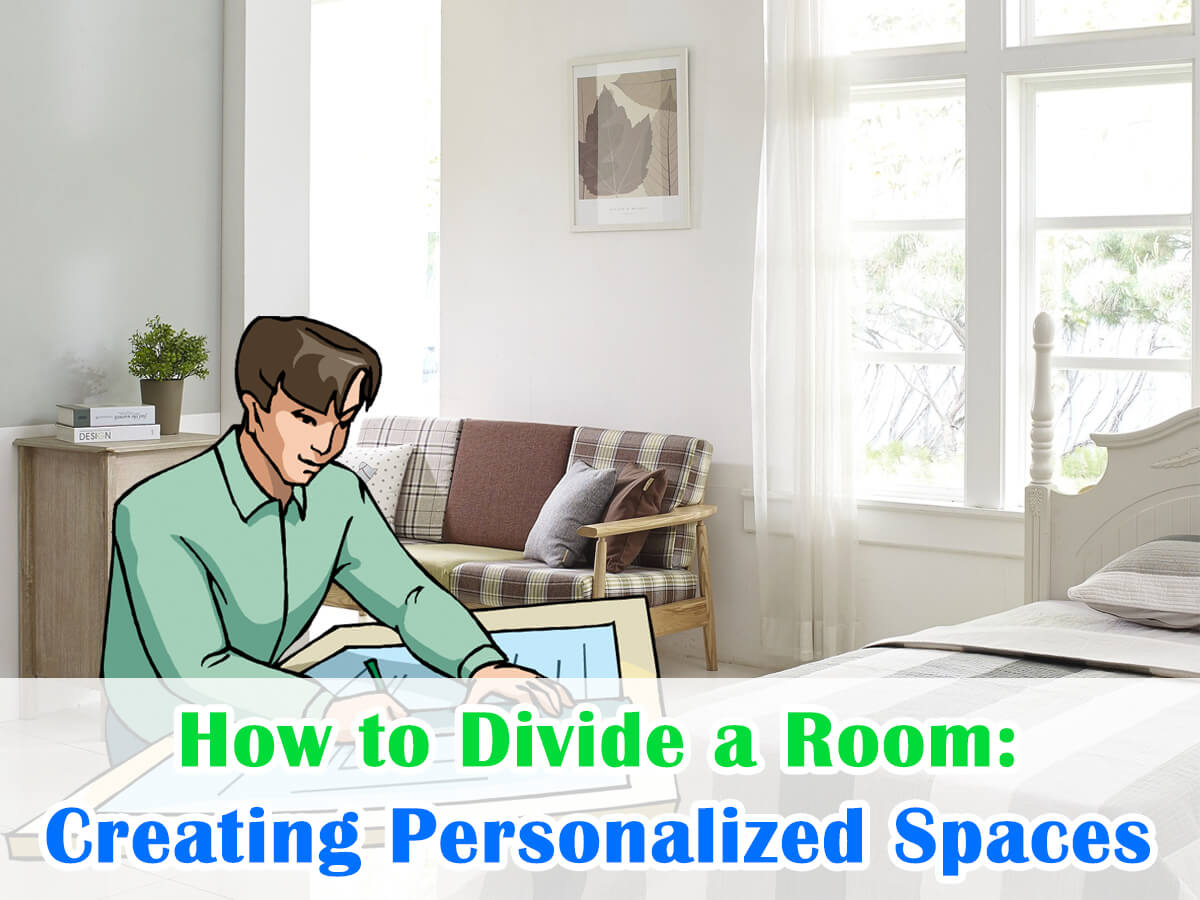I don’t know about you, but I am a staunch believer in the idea that our surroundings have a profound impact on our mindset, our daily habits, and ultimately, our lives. Over the years, I’ve noticed that a well-organized and personalized space doesn’t just look good—it feels good too. It becomes an inviting, comfortable environment where creativity, productivity, and peace coexist.
And that’s why today, I want to share something special with you. We’re going to explore how to divide a room and effectively transform a single space into multiple functional areas. Yes, you heard it right, and believe me when I say it’s easier than you think.
How to Divide a Room
Step 1: Analyze the Space and Identify Your Needs
The first step to dividing a room is to take a good, long look at the space you’re working with. Spend some time in this room. What’s the natural light like? Where are the windows, the doors, the power outlets? What are the room’s dimensions? It might sound like a bit much, but remember, we are architects of our own environment.
The second part of this step involves identifying what you want the room to do for you. Do you need a quiet corner for reading or work? A lively area for socializing? A cozy spot for sleeping? Your room is an open canvas ready to be divided according to your needs. So grab a pen and paper and list down your requirements. The more detailed, the better.
Step 2: Draw Up a Plan
After evaluating the room and identifying your needs, it’s time to map out your ideas. Remember, Rome wasn’t built in a day and neither will your perfect room be. Be patient and put thought into your layout. Sketch it out and see how different configurations look on paper.
Now, it’s crucial to bear in mind the principles of balance and harmony. While your room is technically being divided, it should still feel like a cohesive whole. It’s all about creating a flow that seamlessly ties the different areas together. The best way to do this? Experiment on your blueprint until you find the design that resonates with you.

Step 3: Choose Your Room Dividers
The blueprint of your room is ready, and now comes an exhilarating part—choosing your room dividers. These are the elements that will physically divide your space into distinct areas. The options for room dividers are practically endless, ranging from curtains and screens to bookcases and open shelves. What you choose will depend on a number of factors including your space, your budget, and, importantly, your personal aesthetic.
Curtains
 Curtains serve as an ideal choice for creating a flexible and aesthetic division in a room. Their adaptability allows you to alter the openness of the space at will, while their availability in a myriad of colors, patterns, and materials ensures they can complement any decor. Light, airy fabrics can foster a casual, relaxed ambiance, while heavier materials can add a touch of elegance and coziness.
Curtains serve as an ideal choice for creating a flexible and aesthetic division in a room. Their adaptability allows you to alter the openness of the space at will, while their availability in a myriad of colors, patterns, and materials ensures they can complement any decor. Light, airy fabrics can foster a casual, relaxed ambiance, while heavier materials can add a touch of elegance and coziness.
Plus, the assortment of patterns ranging from serene florals to dynamic geometric designs offers endless possibilities for personal expression. Easily replaceable with the changing seasons or design whims, curtains encapsulate the perfect blend of functionality and style, providing an adaptable and visually appealing solution for dividing your room.
Screens / Room Divider Panels
On the other hand, screens or room divider panels offer a more solid and often more decorative division. They’re portable, and can quickly transform the space without any significant alterations. I warmly recommend RANTILA 3 Panel Room Divider (available on Amazon). This freestanding partition screen is both elegant and versatile. Its foldable structure allows for easy movement and storage. It’s a perfect blend of form and function, offering privacy while enhancing the aesthetic appeal of your room.
Bookcases / Open Shelves
 Bookcases and open shelves present a versatile choice for room division, marrying functionality with aesthetics. Beyond their primary role as dividers, they offer valuable storage space—a boon in smaller rooms or for maintaining an organized environment. But their appeal extends beyond practicality; these fixtures can transform into stylish focal points in your space. They can display a curated selection of personal artifacts, from family photos to thematic collections, thus becoming part of the room’s decor.
Bookcases and open shelves present a versatile choice for room division, marrying functionality with aesthetics. Beyond their primary role as dividers, they offer valuable storage space—a boon in smaller rooms or for maintaining an organized environment. But their appeal extends beyond practicality; these fixtures can transform into stylish focal points in your space. They can display a curated selection of personal artifacts, from family photos to thematic collections, thus becoming part of the room’s decor.
The style of the unit itself—be it sleek and modern or rustic and vintage—also contributes to the room’s aesthetic. By using bookcases or open shelves as dividers, you get to delineate your space, increase storage, exhibit personal items, and add a touch of style, all in one savvy move.
But no matter what type of divider you choose, remember to see it as more than just a functional item. Your room divider is an opportunity to make a design statement, to showcase your style. Perhaps you’ll choose a geometric screen for a modern touch, or maybe a vintage wooden bookcase to create a sense of nostalgia. Each choice is a chance to further personalize your space, to make it a place where you feel truly at home.
Step 4: Arrange and Re-arrange
Now comes the fun part—actually dividing your room. Begin by placing your chosen dividers according to your plan. Then, furnish each newly created space in a way that serves its intended purpose. But remember, your first arrangement doesn’t have to be the final one.
Take your time to live with the new layout. Over the next few days, you’ll get a better idea of what works and what doesn’t. You might find that you need more light in your reading area or a bigger divider for your workspace. Stay flexible and make adjustments as necessary. This is your space, and it should evolve with you.
Additional Considerations
Beyond this step-by-step guide, there are other considerations that can enrich the process of dividing a room. For instance:
- The colors you use in each space can make a world of difference. Different colors evoke different emotions and can subtly denote the purpose of each area. For example, blues and greens are known to be calming and can be great for a work or reading area, while warmer hues like reds and oranges can energize a socializing space.
- Lighting, too, plays a crucial role. Each space within your room might require different lighting conditions depending on its function. Adjustable lights or lamps can be an excellent investment, allowing you to switch from a bright, energizing light during work hours to a soft, cozy glow when it’s time to relax.
- And let’s not forget the importance of décor. The small details can tie everything together and inject personality into your spaces. A piece of artwork, a photo frame, a cozy rug, or a quirky clock can bring in a personal touch that makes your space truly your own.
Here are a few more ideas, as demonstrated in a video from SlideHouse:
https://www.youtube.com/watch?v=HtIjLqw2MDA&ab_channel=SlideHouse
Incorporating Green Dividers
One of the most refreshing and vibrant ways to divide a room is through the use of green dividers, bringing a touch of nature indoors. Plants not only add color and vitality but also improve the quality of the air and introduce a soothing, calming ambiance. From tall indoor trees to strategic placements of smaller potted plants, greenery offers a unique, living method for dividing your space.
A clever way to employ green dividers is by using tall plants such as Ficus trees, Yucca plants, or even bamboo. These can create an effective natural screen between different areas of your room. You can choose to use a single plant as a focal point or a cluster of plants to create a more defined division. The key is to ensure your indoor plants receive adequate light and care to keep them lush and thriving.
Another approach to using green dividers is through shelving units or plant stands. You can place various smaller plants in a coordinated manner on these structures, creating a verdant, multi-level partition. This can be particularly useful in rooms with limited floor space. Choose plants with different textures, colors, and heights for visual interest. Popular choices include snake plants, pothos, or spider plants, which are not only aesthetically pleasing but also easy to care for. With a little creativity, your green dividers can become living artwork in your home.
Final Words
So, there you have it—your comprehensive guide on how to divide a room. From analyzing the space and planning your layout to choosing dividers and adding a personal touch, each step plays a pivotal role in creating personalized spaces.
And remember, your room is more than just four walls—it’s a reflection of you. Enjoy the process of dividing and decorating it in a way that makes you feel good, productive, and at home.
Here’s to creating spaces that inspire and comfort us every day!


